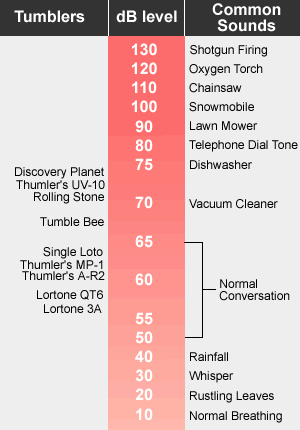

Painful:ġ40 dB = Firearms, Air-Raid Siren, Jet Engineġ20 dB = Jet Plane Take-off, Amplified Music at 4-6 ft., Car Stereo, Band Practice Extremely loud:ġ00 dB = Snowmobile, Chain saw, Pneumatic Drillĩ0 dB = Lawnmower, Shop Tools, Truck Traffic, Subway Very loud:Ħ0 dB = Conversation, Dishwasher Moderate:ģ0 dB = Whisper, Quiet Library Save Your HearingĮxposing yourself to high decibel environments can result in permanent damage to your hearing. The use of hearing protection is strongly recommended during continued exposure to any of the previously listed environments, as all can deliver sounds in excess of 90 decibels. In all cases where the sound levels exceed the values shown below, a continuing, effective hearing conservation program should be administered.įor a better grasp of industry standards, here are a few of the most common producers of noise levels that OSHA considersto be dangerous: lawnmowers, rock concerts, firearms, firecrackers, headset listening systems, motorcycles, tractors, power tools and industrial machinery. Each hearing protector product is required to meet the ANSI S3.19-1974 testing of NRR levels. For example, if a worker is exposed to 100dB in a 2 hour period, he or she is also required to wear hearing protection. This OSHA Action Level, however, will vary depending upon the decibel level of the surrounding environment. While the amount of on-the-job noise exposure can be determined through various testing devices, excessive noise is generally defined as exposure to 85 or more decibels of sound over an 8 hour period.According to OSHA,hearing protection is required for all employees at this degree of exposure. For example, using 3M™ E-A-R™ Classic Earplugs (NRR 29) with 3M™ Peltor™ H7 Deluxe Earmuffs (NRR 27) would provide a Noise Reduction Rating of approximately 34 decibels. earplugs AND earmuffs), rather than adding the two NRR numbers together, you simply add five more decibels of protection to the device with the higher NRR. When hearing protectors are worn in combination (i.e. How does wearing dual hearing protectors change NRR? *To maximize noise reduction, hearing protectors must be worn properly. If you are wearing a product with an NRR of 27 it would deduct 10 decibels (27-7/2=10). This means that if you are at a rock concert with a level of noise exposure at 100 dB and you are wearing a hearing protector with an NRR 33 dB, your new level of noise exposure is 87 dB. Given the previous example, your noise reduction equation would look like the following: (33-7)/2 = 13. Instead, to determine the actual amount of decibel deduction applied (when decibels are measured dBA which is the most common), you take the NRR number (in dB), subtract seven, and then divide by two. For example, if you are at a rock concert where the level of noise exposure is 100 dB and you are wearing earplugs with an NRR 33dB, your level of exposure would not be reduced to 67 dB. Keep in mind, however, that while the NRR is measured in decibels, the hearing protector being used does not reduce the surrounding decibel level by the exact number of decibels associated with that protector’s NRR. When hearing protection is worn, your level of exposure to noise is based on the NRR rating of the protection device being used. How does NRR change decibels of exposure? If you are interested in shopping our entire selection of hearing protection you can browse here. Shop Hearing Protection by Noise Reduction Ratings (NRR) Shop Ear Plugs The higher the NRR number associated with a hearing protector, the greater the potential for noise reduction. Classified by their potential to reduce noise in decibels (dB), a term used to categorize the power or density of sound, hearing protectors must be tested and approved by the American National Standards (ANSI) in accordance with the Occupational Safety & Health Administration (OSHA). Noise Reduction Rating (NRR) is a unit of measurement used to determine the effectiveness of hearing protection devices to decrease sound exposure within a given working environment.


 0 kommentar(er)
0 kommentar(er)
